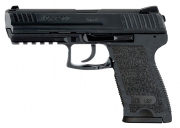Depends on his baseline I suppose. I get around 2.10 if I have missed a week and by the end of my session I am around 1.85 with the odd lottery winning 1.65 thrown in to cheer me up.
There is nothing wrong with .26, mate.
Have a read up on human reaction time and you will find that it is between .15 and .30. For shooters it averages around the .25 mark, I will share who told me that in a moment.
You need to split reaction down into receiving the stimuli informing you to do something and then actually doing it. That breaks the times down to .075 + .075 = .15'ish and .15 + .15 = .30'ish.......or, for shooters around the .125 + .125 = .25'ish mark. So you can see that your .26 is very, very, respectable.
In practical terms that means if you are doing a Bill Drill starting at the low ready, 6 to the body and one to the head it should look something like:
1. Low ready to first body shot = reaction to timer move to body area .25 + reaction to requirement to shoot .25 = total time to first shot .5'ish
2. Each subsequent body shot .25
3. Move to final head shot .25 + final head shot .25 = .5
You will have good days and times may come down a smidge, you will have bad days and times will go up. Build your drills and set times around each target transition and shot requiring .25, not the draw though as that is a different matter and pistol holster juggling is difficult to time and needs practice, lots of it.
Bill Rogers has studied, dissected, analysed and implemented reaction time as the basis for his shooting schools teaching and training. Bill trains gunfighters. He has trained many, many, professionals at the highest level and started the school as a happy accident at the behest of ST6. If you need to test your ability I would point you at him, and it is Bill who will tell you that .25 is around benchmark for shooters and he has been observing and measuring that for over 30 years.
Watch --->
https://www.youtube.com/watch?v=HYDiKda0PHA
.Anyway, I'm off to San Francisco for the next week now.



 Reply With Quote
Reply With Quote





